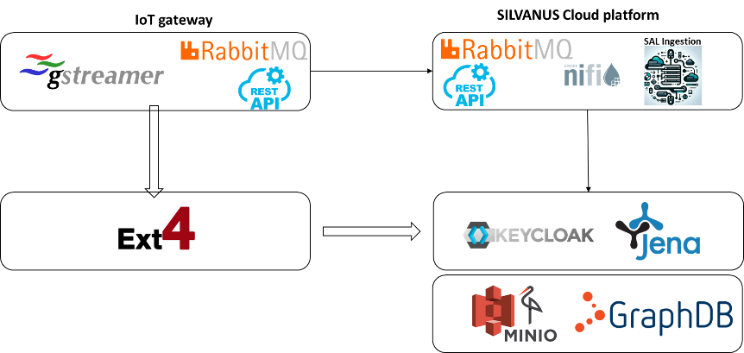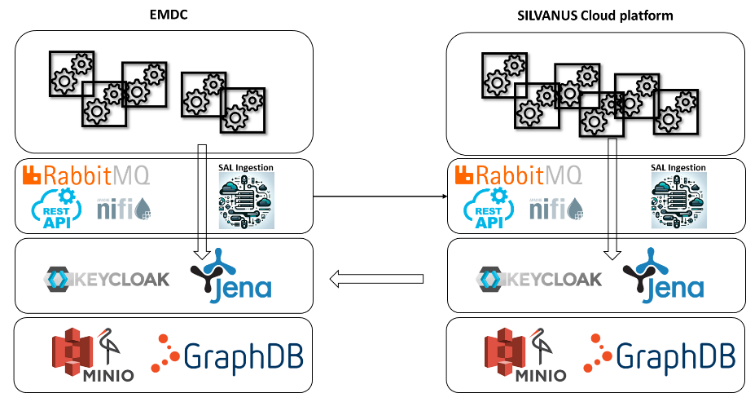Forward Command Centre
Forward Command Centre
SILVANUS Edge platforms will include the Forward Command Centres (FCCs), from which the fire commander will be able to manage the firefighting operations. FCCs could be a vehicle, a building, etc., close to the wildfire during Phase B of the incident from where the commander using a device (laptop, tablet or other) has access to the SILVANUS functionalities. Initially, it was considered that there would be a single FCC in each pilot/incident case, even though in practice there are (specific) cases where multiple FCCs could co-exist: for example, a fire crossing borders/jurisdiction. Edge data microcentres (EDMCs) will host a subset of the SILVANUS core system. The EMDCs are designed to assist the Fire Commander’s operations and are special IT servers, designed to run outside of the cloud data centre at the Edge. Therefore, the FCC is considered a mobile or frontline version of the EMDC.
Last but not least, the edge platform will include IoT Gateways, (e.g., Dell 5200 IoT gateway devices or similar), that will be responsible for gathering information from IoT sensors and pre-process/analyse data on the edge. These may come in different formats and will be permanently deployed in Phases A, B, and C. As far as data transferring from the Edge-to-Cloud is concerned, it is expected that the IoT sensors will ingest data into the IoT Gateway, either by using a stream processor such as gstreamer or by frame and object factorization. Event notifications are forwarded via RestApi or RabbitMQ messages and updated in the Storage Abstraction Layer’s Metadata index and then retrieve associated artifacts from the local file system or using the Claim Check Pattern (CCP) mechanism. The Figure below shows the Edge to Cloud data transfer in SILVANUS.

Regarding the process of transferring data from the Cloud to the Edge, it is anticipated that only the EMDCs will retain both general data and specific data for each pilot project. Due to the limited storage capacity of the far-edge devices, only essential data subsets will be cached at them. The EMDC service will locate data within its local object store by conducting searches and querying the local metadata index. Should the required data object not be present in the local store, the Local Storage Abstraction Layer will consult the Cloud’s metadata index. Upon locating the data, it will be downloaded to the local object store, ensuring that the most recent versions of certain objects are always readily available locally. Furthermore, it’s crucial for FCCs to remain consistently updated with all necessary information to fulfil their critical functions, even amidst unstable north-south communication. The SILVANUS architecture employs Federated RabbitMQ in conjunction with shovels to establish a robust mechanism for uninterrupted data streaming communication, both from edge to edge and from edge to cloud. RabbitMQ leverages federated exchanges and queues to proficiently route messages between disparate brokers, thereby ensuring a consistent flow of data across various edge locals and central cloud services. Shovels serve as a conduit, orchestrating the precise movement of messages from one broker to another, which is particularly valuable over networks that may not be consistently reliable. Together, these features create a durable, scalable, and adaptable messaging infrastructure that caters to the evolving requirements of distributed applications, thus promoting efficient data exchange and cohesive integration throughout widespread architectures. The respective communication diagram is depicted in the Figure below (data transfer from Cloud to the Edge):

It is important to note that data at rest, or data that is expected to be stored in the object store, must adhere to the data ingestion pathway via RestApi.